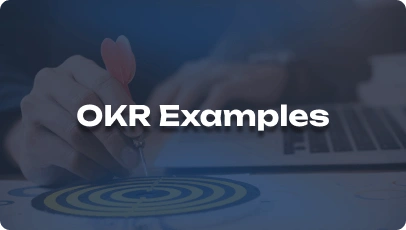In the fast-paced world of Digital Commerce/Marketing, Ecommerce Specialists play a crucial role in driving online revenue, enhancing customer experiences, and optimizing digital strategies. Mastering the role of an Ecommerce Specialist is key to staying ahead in the industry, where trends evolve rapidly, and competition is fierce. Understanding the complexities of Ecommerce, from user behavior to platform technologies, empowers professionals to navigate challenges and capitalize on opportunities, ultimately leading to business growth and success.
1. What are the key elements of a successful Ecommerce strategy?
A successful Ecommerce strategy involves comprehensive market research, user-centric design, seamless user experience, effective product merchandising, and data-driven decision-making.
2. How do you approach optimizing product listings for better visibility and sales?
I optimize product listings by using high-quality images, compelling product descriptions, relevant keywords, and customer reviews to improve search rankings and conversion rates.
3. Can you explain the importance of data analytics in Ecommerce decision-making?
Data analytics provides valuable insights into customer behavior, sales trends, and marketing performance, enabling data-driven decisions to improve targeting, personalization, and overall Ecommerce strategy.
4. How do you stay updated on the latest Ecommerce trends and technologies?
I stay updated through industry publications, attending conferences, participating in online forums, and continuous learning through courses and certifications in Ecommerce and Digital Marketing.
5. What tools do you use for Ecommerce analytics and reporting?
I utilize tools like Google Analytics, Adobe Analytics, Shopify Analytics, and data visualization platforms to track key metrics, analyze performance, and generate reports for actionable insights.
6. How do you approach optimizing the checkout process to reduce cart abandonment?
I streamline the checkout process by minimizing steps, offering guest checkout options, implementing trust signals, providing multiple payment methods, and sending cart abandonment emails to recover lost sales.
7. Can you share your experience with A/B testing in Ecommerce campaigns?
A/B testing involves creating variations of web elements or messages to determine which performs better in terms of conversions. It helps in optimizing Ecommerce campaigns by testing different strategies and analyzing results to make data-driven decisions for improvement.
8. How do you ensure a seamless omnichannel experience for Ecommerce customers?
I ensure a seamless omnichannel experience by integrating online and offline touchpoints, maintaining consistent branding, syncing inventory across channels, and offering options like buy online, pick up in-store (BOPIS) to enhance customer convenience.
9. What strategies do you implement to drive traffic and increase conversions on Ecommerce websites?
I implement SEO best practices, content marketing, social media advertising, email campaigns, influencer partnerships, and referral programs to drive traffic and improve conversion rates on Ecommerce websites.
10. How do you approach customer segmentation and personalization in Ecommerce marketing?
I segment customers based on demographics, behavior, and preferences to deliver personalized experiences through targeted messaging, product recommendations, dynamic content, and personalized promotions to drive engagement and loyalty.
11. What role does social commerce play in modern Ecommerce strategies?
Social commerce integrates social media platforms with Ecommerce, allowing customers to discover, research, and purchase products directly within social channels. It enhances brand visibility, drives engagement, and facilitates seamless shopping experiences.
12. How do you handle customer reviews and feedback to improve Ecommerce performance?
I monitor customer reviews and feedback, respond promptly to inquiries and complaints, address issues proactively, and use feedback to identify areas for improvement, enhance customer satisfaction, and build brand loyalty.
13. In your opinion, what are the biggest challenges facing Ecommerce businesses today?
The biggest challenges include increasing competition, evolving consumer expectations, cybersecurity threats, supply chain disruptions, data privacy concerns, and adapting to rapid technological advancements while ensuring regulatory compliance.
14. How do you approach Ecommerce content strategy to engage and retain customers?
I develop a content strategy that aligns with the brand voice, addresses customer needs, educates and entertains the audience, leverages visual and interactive content, and focuses on storytelling to create meaningful connections with customers.
15. What are the key metrics you track to measure the success of Ecommerce campaigns?
I track metrics such as conversion rate, average order value, customer acquisition cost, customer lifetime value, bounce rate, cart abandonment rate, return on ad spend (ROAS), and overall revenue to evaluate the performance and ROI of Ecommerce campaigns.
16. How do you approach Ecommerce SEO to improve organic visibility and traffic?
I optimize product pages, meta tags, URLs, and content for relevant keywords, create high-quality backlinks, improve site speed and mobile-friendliness, optimize for local search, and monitor search engine algorithms to enhance organic visibility and drive traffic.
17. What role does user experience (UX) design play in Ecommerce success?
UX design is crucial for Ecommerce success as it influences how users interact with the website, impacts conversion rates, improves customer satisfaction, fosters trust, and enhances brand loyalty by providing intuitive navigation, responsive design, and seamless shopping experiences.
18. How do you approach Ecommerce email marketing campaigns for customer retention and re-engagement?
I segment email lists based on purchase history, preferences, and behavior, personalize email content, use automation for targeted campaigns, send personalized recommendations, promotions, and loyalty rewards to retain customers and re-engage inactive subscribers.
19. What strategies do you employ to build trust and credibility in Ecommerce transactions?
I use secure payment gateways, display trust badges, provide clear product information, offer transparent pricing, secure customer data, implement customer reviews and testimonials, and ensure easy return and refund policies to build trust and credibility with customers.
20. Can you share insights on the role of mobile commerce (m-commerce) in Ecommerce growth?
Mobile commerce is essential for Ecommerce growth as an increasing number of users shop via mobile devices. Optimizing websites for mobile, implementing mobile payment options, and creating responsive designs are key to capturing mobile traffic and improving conversions.
21. How do you approach Ecommerce inventory management to prevent stockouts and overstock?
I use inventory management software, analyze sales data, set reorder points, implement demand forecasting, monitor stock levels in real-time, establish safety stock levels, and optimize inventory turnover to prevent stockouts and overstock situations.
22. What strategies do you implement to reduce Ecommerce website load times and improve performance?
I optimize images, minify CSS and JavaScript files, leverage browser caching, use Content Delivery Networks (CDNs), enable compression, reduce server response times, and conduct regular performance audits to enhance website speed and overall user experience.
23. How do you approach international Ecommerce expansion and localization?
I conduct market research, analyze cultural preferences, adapt content and language, offer local payment methods, comply with international regulations, optimize for global SEO, and provide multilingual customer support to expand Ecommerce operations internationally and cater to diverse markets.
24. Can you share your experience with influencer marketing in Ecommerce campaigns?
Influencer marketing involves partnering with social media influencers to promote products, reach new audiences, and drive engagement. It helps in building brand awareness, credibility, and trust among followers, leading to increased sales and brand advocacy.
25. How do you approach Ecommerce customer service to enhance the overall shopping experience?
I provide multiple customer support channels, ensure quick response times, offer 24/7 chat support, personalize interactions, resolve issues promptly, seek feedback for continuous improvement, and prioritize customer satisfaction to enhance the overall shopping experience.
26. What strategies do you employ to leverage user-generated content (UGC) in Ecommerce marketing?
I encourage customers to share reviews, ratings, testimonials, and photos, feature UGC on product pages and social media, run UGC contests, showcase customer stories, and use UGC to build social proof, authenticity, and engagement in Ecommerce marketing.
27. How do you approach Ecommerce affiliate marketing to drive sales and partnerships?
I recruit affiliates, set commission structures, provide marketing materials, track affiliate performance, optimize for conversions, and foster relationships with affiliates to drive traffic, sales, and partnerships through affiliate marketing programs.
Remarketing involves targeting users who have visited the website but did not make a purchase, using personalized ads, email reminders, and special offers to re-engage and convert them into customers. It helps in increasing conversions and maximizing ROI.
29. What steps do you take to ensure Ecommerce website security and protect customer data?
I implement SSL encryption, secure payment gateways, regular security audits, PCI compliance, two-factor authentication, data encryption, secure hosting, and educate employees on cybersecurity best practices to safeguard customer data and prevent security breaches.
30. How do you measure and optimize Ecommerce ROI to ensure profitability and growth?
I calculate ROI by analyzing revenue, costs, and investments, track key performance indicators (KPIs), A/B test strategies, refine marketing campaigns, optimize conversion funnels, and focus on maximizing profitability and growth in Ecommerce operations.







